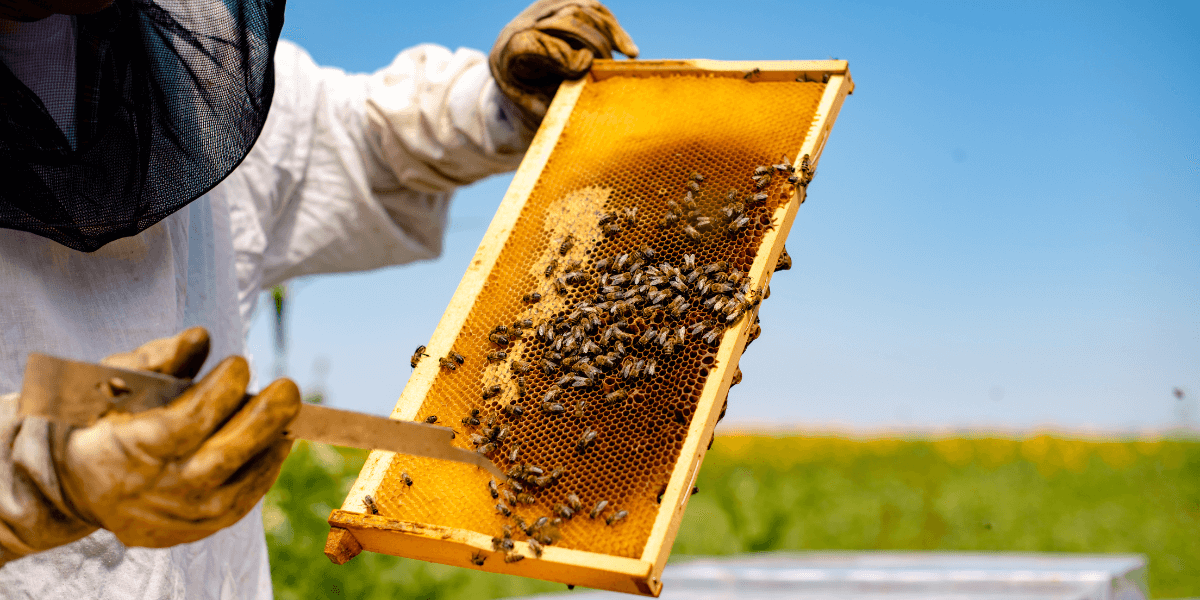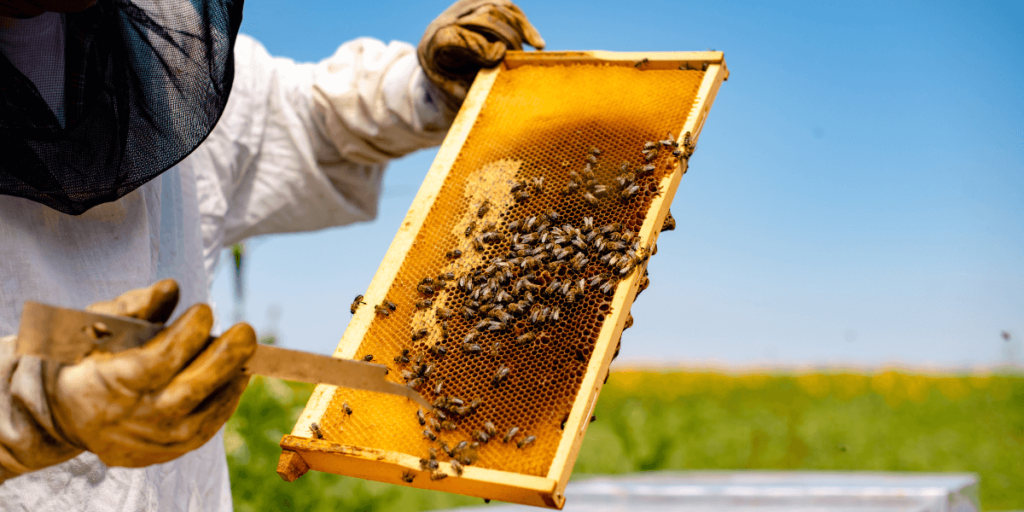

 By Angjelo Lumi
By Angjelo Lumi- 471
- 0
Are you intrigued by the enchanting world of bees and the delicious rewards they bring? Beekeeping, also known as apiculture, offers a wonderful opportunity to connect with nature, promote sustainability, and enjoy the fruits of your labor—literally! In this beginner’s guide, we will walk you through the essential steps to embark on your beekeeping journey and nurture your very own hive of honeybees.

- Research and Learn
Before diving into beekeeping, it’s crucial to equip yourself with knowledge about bees and their behavior. Books, online resources, and local beekeeping associations are excellent sources of information. Familiarize yourself with bee biology, hive construction, and the various tasks involved in maintaining a healthy colony. - Acquire Beekeeping Equipment
To set up your beekeeping operation, you’ll need some essential equipment. These include: Beehive: The most commonly used beehive is the Langstroth hive, which consists of boxes with removable frames for the bees to build their comb. Other options like top-bar hives or Warre hives are worth exploring as well.
Protective Gear: Invest in a beekeeper’s suit or jacket, gloves, and a veil to shield yourself from stings. Safety should always be a priority while working with bees.
Tools: Essential tools include a hive tool for prying open frames, a bee brush for gently moving bees, and a smoker to calm the bees during hive inspections.
Feeder: Depending on your region and the availability of natural forage, you may need a feeder to supplement your bees’ diet during lean periods. - Choose Your Bees: There are different ways to acquire bees for your hive.
Package Bees: This is a common option for beginners. A package typically contains a queen and a certain number of worker bees. They are usually purchased from reputable bee breeders or suppliers.
Nucleus Colonies: Nucs are small colonies with a mated queen, a few frames of brood (developing bees), worker bees, and food stores. They offer a head start compared to package bees.
Swarm Capture: In some cases, you may have the opportunity to capture a swarm of bees. This requires experience and knowledge, so it’s generally not recommended for beginners. - Prepare Your Beehive: Before introducing bees to their new home, ensure the hive is set up correctly.
Assemble the Hive: Follow the manufacturer’s instructions to assemble your beehive. Ensure it is sturdy, well-ventilated, and protected from the elements.
Add Frames and Foundation: Install frames with wax foundation inside the hive. These frames provide a structure for the bees to build their comb.
Position the Hive: Choose a suitable location for your hive. It should have access to morning sunlight, be sheltered from strong winds, and offer a nearby water source. - Hive Management: Once your bees are settled in their new home, ongoing hive management is essential for their well-being.
Regular Inspections: Conduct hive inspections every 7 to 10 days during the active season. Look for signs of a healthy queen, sufficient brood, and honey stores. Ensure pests and diseases are kept in check.
Feeding: Bees require a steady supply of nectar and pollen. Monitor the availability of natural forage, and if necessary, provide supplemental feeding with sugar syrup or pollen patties.
Swarm Prevention: Be vigilant for signs of swarming, such as overcrowding or queen cells. Implement swarm prevention measures.
